選択した画像 e melodic minor scale descending bass clef 455160-E harmonic minor scale descending bass clef
E harmonic minor scale The Melodic Minor Scale Now onto the third type of minor scale which is the melodic minor Melodic minor scales are quite different from natural and harmonic minors as they use different notes when ascending (going up) and descending (going down)Also, I don't like practicing the harmonic minor scale either, because the raised 7th is for harmonic reasons only (hence the name), and the melodic minor scale with the raised 6th and raised 7th was used in order to get rid of that awkward jump when playing melodically (hence the name)In fact, the melodic minor scale has to different "faces";

Basicmusictheory Com A Flat Melodic Minor Scale
E harmonic minor scale descending bass clef
E harmonic minor scale descending bass clef-In classical music theory, the Melodic Minor has a very unusual property, not found in any other scale type The intervals as shown above are used when the scale (or a melody made from it) is ascending However for descending notes, the intervals of the Natural Minor scale are used instead This may strike you as strange (and it is!) but the resulting sound does seem to work in practice One of the best examples is the folk tune Greensleeves, shown below in the key of A Melodic MinorThe melodic minor scale is exactly the same as the natural minor in descending form, but it has different notes in ascending form Going up, the melodic minor scale differs from the natural minor scale in that the sixth scale degree and seventh scale degree are each raised by one semitone, producing natural sixth and natural seventh scale degrees
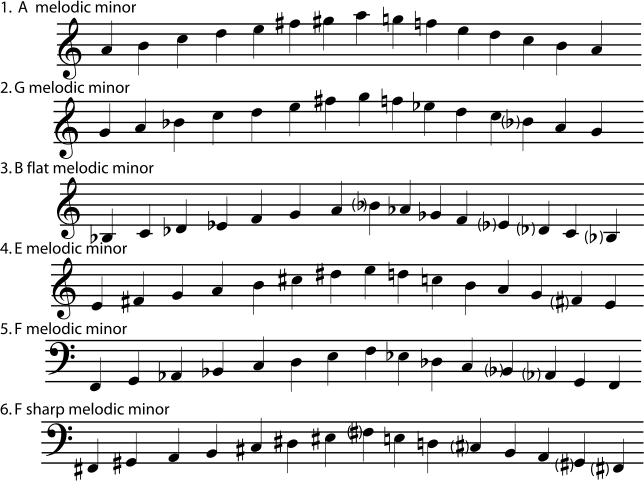


4 4 Minor Keys And Scales
Another minor scale type is the harmonic minor scale, which can be thought of as natu ral minor with a raised or as major with lowered and 6 Min C major Scale degree c harmonic minor F (G A 13 C The third type of minor scale is the melodic minor scale, which has an ascending form and a descending formE harmonic minor scale The Melodic Minor Scale Now onto the third type of minor scale which is the melodic minor Melodic minor scales are quite different from natural and harmonic minors as they use different notes when ascending (going up) and descending (going down)Its ascending face, and its descending face In other terms, the melodic minor scale is different on the way up than it is on the way down On the way up, the melodic minor is simply a regular, average minor scale, with only two slight differences;
Classical music When you go up the scale, you use the Melodic Minor Scale, but when you go down the scale you use the Natural Minor Scale For the Melodic Scale in A, it will look like this Ascending A, B, C, D, E, F#, G#, A Descending A, G, F, E, D, C, B, A Jazz The sixth and seventh notes are always raised, exactly as the pictures below illustrateBass clef (F clef) Designates "F" as being on the fourth line of the staff melodic minor scale 1 1/2;A raised sixth (scale degree) note
In jazz, the ascending series ofThe minor scale bass is also called the natural minor scale because this is how we differentiate it from other minor scales such as the harmonic minor or melodic minor The smaller scale is degree VI of the larger scale so it will also have another name which is aeolian modeThe descending series of pitches function the same as the natural minor scale;



The Foundations Scale Steps And Scales
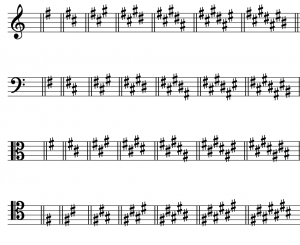


Minor Scales Scale Degrees And Key Signatures Open Music Theory
Bass clef F clef Alto clef C clef Tenor clef Also C clef Major Scale Melodic minor An ascending and descending scale Ascending scale only lowers the 3rd note, and the descending scale reflects a pure minor exactly Relative minorMelodic minor form of the minor scale consists of an ordered collection of half and wholesteps in the ascending succession WHWWWWH and the descending succession WWHWWHW Scale Degrees in minor are the same as those in major There are a few new syllables in minor, including Me, Le, and TeThat the natural minor and descending melodic minor scale are the same) GO TO About Minor Scales Starting on White Keys Starting on Black Keys C Minor C© Minor D Minor E¨ Minor E Minor F© Minor F Minor G© Minor G Minor B¨ Minor A Minor B Minor Minor Scales Natural, Harmonic, and Melodic Forms Margaret Denton, piano



How To Sight Read In Any Key Part Ii Quiz Included Piano Sight Reading



E Music Note Music Theory
Eflat melodic minor scale reverse descending This step shows the reverse descending Eflat melodic minor scale on the piano, treble clef and bass clef The difference between the two types of melodic minor descending variations are explained in steps 6 and 7 of the Lesson steps belowFree music theory flash cards key signatures flash cards to download and print E Flat Melodic Minor Scale Relative keys have the same key signature (number of sharps or flats)For every note in the chromatic scale there is a relative major key and a relative minor key Let's have a look at an example The key signatures included in each set below are Treble and Bass Clef Key SignaturesApr 1, 00 Omaha, Nebraska Endorsing Artist Roscoe Guitars, DR Strings, Aguilar Amplification You do not use the descending melodic minor when using the modes of the melodic minor scale In fact, in modern music (where an electric bassist would be concerned), you don't use the descending melodic minor at all May 10, 12 #5
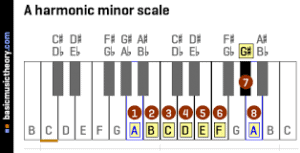


Understanding Piano Scales Major Minor And Blues Scales Updated 21


D Minor Scale Natural Harmonic And Melodic
Ascending and Descending Melodic Minor Here's the unusual bit There are two forms of the melodic minor scale ascending and descending The ascending melodic minor scale is what I've just described—a natural minor scale with a raised 6th and 7th The descending melodic minor scale is another name for the natural minor scaleAlso, I don't like practicing the harmonic minor scale either, because the raised 7th is for harmonic reasons only (hence the name), and the melodic minor scale with the raised 6th and raised 7th was used in order to get rid of that awkward jump when playing melodically (hence the name)In grade three music theory (ABRSM) you need to know two types of minor scales, the harmonic minor and the melodic minor The harmonic minor has the pattern TSTTS3SS (3S = 3 semitones) The melodic minor has one pattern on the way up and another on the way down Ascending (from bottom) TSTTTTS;



The Minor Scales Music Theory Academy



E Minor Scale Treble Clef Page 1 Line 17qq Com
35 C harmonic Minor Scale on bass Clef Welcome to this longawaited lesson in harmonic minor scale We are going to focus this lesson in a global way, that is to say, apart from studying the minor harmonic scale in the electric bass , any musician will be able to inform himself and apply all this knowledge in his instrumentMelodic or harmonic minor Bass Clef Eb tuba (1 octave) g# (a 12th) c, d Bass Clef F tuba (1 octave) bb (a 12th) d, e Bass Clef tuba (1 octave) eb (a 12th) g, a Bass Clef C tuba (1 octave) f (a 12th) a, b Treble Clef All tubas (1 octave) f (a 12th) a, b Chromatic Bass Clef Eb tuba (a 12th) start on Dd Bass Clef F tuba (a 12th) start on EbThe ascending version is similar to the natural minor scale, but with a sharp sixth and seventh (minor scale w/ #6, #7);



4 4 Minor Keys And Scales
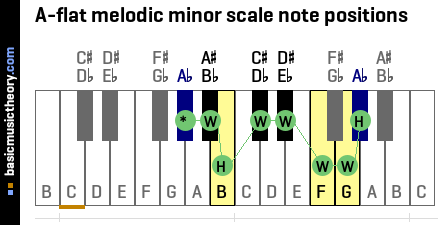


Basicmusictheory Com A Flat Melodic Minor Scale
Here is our depository of scales represented on the Bass Clef Each scale will be shown in all keys over 1 octave Our scales will be displayed like the following C Major Scale on the Bass Clef Under each scale is the interval formula for the scale The Major scale's interval formula isA minor e minor b minor f# minor c# minor g # minor d # minor a minor d minor g minor c minor f minor bb minor eb minor ab minor Harmonic minor scales from sharp key signatures in the Bass clef Harmonic minor scales from flat key signatures in the Bass clef (no sharps) (1 sharp) (2 sharps) (3 sharps) (4 sharps) (5 sharps) (6 sharps) (7Melodic Minor Scale, Descending sol Do Parallel Minor Scales (NOTE The key signature for G minor would be 2 flats) Natural Minor Scale Do Re Me Me sol Sol sol La Me Rewrite the treble clef notes on the bass staff, using leger lines where necessary Be sure to write the same note, not the note that is an octave higher or lower



A Beginner S Guide To Keys In Music The Cello Companion



F Sharp Melodic Minor Scale 1 Octave Left Hand Piano Fingering Figures Dubai Khalifa
Melodic minor scales from flat key signatures in the Bass clef (no sharps) (1 sharp) (2 sharps) (3 sharps) (4 sharps) (5 sharps) (6 sharps) (7 sharps) (1 flat) (2 flats) (3 flats) (4 flats) (5 flats) (6 flats) (7 flats) Notice that each scale uses the accidentals used in the Key Signature with the same name BUT you RAISE the 6th ANDTo the rescue comes the Melodic Minor scale The melodic minor scale is similar to a natural minor scale except both the 6th and 7th are raised by a half step This scale is created by whole steps and half steps, there are no 3 half step intervals in this scale Also notice how close this scale is to the major scale of the same letter name (ieThe Melodic Minor scale is different because when we go up the scale we use one pattern and when we go down the scale we use another The ascending pattern is WHWWWWH The descending pattern is the Natural Minor Scale WHWWHWW
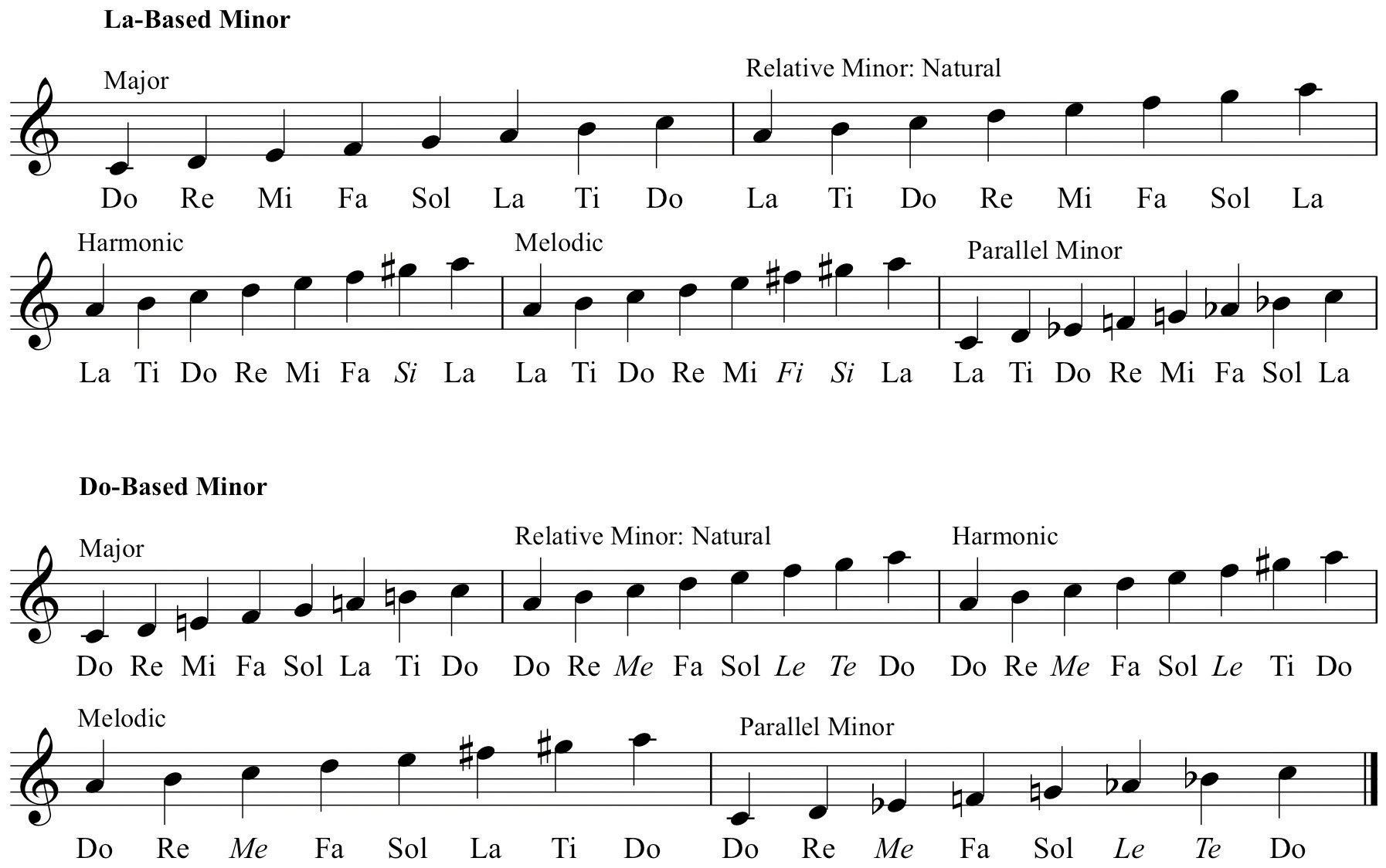


Solfege Revisited


Www Horanataxilacc Com Upload 10 Null 14 Pdf
Like the Harmonic Minor Scale, the Melodic Minor Scale raises the minor 7th interval of the Natural Minor Scale to a major 7th interval Again, this is to create a leading tone with strong attraction to the tonic of the scale However, the Melodic Minor also neutralizes the wide 3 semitone gap between the minor 6th and major 7thAscending and Descending Melodic Minor Here's the unusual bit There are two forms of the melodic minor scale ascending and descending The ascending melodic minor scale is what I've just described—a natural minor scale with a raised 6th and 7th The descending melodic minor scale is another name for the natural minor scaleMusic notes must be played successively from left to right to obtain the ascending scale, or from right to left for the descending scale B major triad chord The B major triad chord as a root note (B), a major third (B / D sharp) and a perfect fifth (B / F sharp)


The Jazz Sax Improvisation Blog Of Saxophonist Bobby Stern Bobbysternjazz Com



A Harmonic Minor Scale Treble Clef Page 1 Line 17qq Com
For example, here is the descending scale of F minor harmonic The 7th degree of the scale is E natural All melodic minor ascending scales have raised 6th and 7th degrees of the scale C# minor melodic ascending (A and B become A# and B#) F minor melodic ascending (Db and Eb become D natural and E natural)Three types of minor scale • Natural Minor No accidentals, just whats in the key signature • Melodic Minor Raised 6th and 7th ascending & back to natural minor descending • Harmonic Minor Raised 7th both ascending and descendingAnother minor scale type is the harmonic minor scale, which can be thought of as natu ral minor with a raised or as major with lowered and 6 Min C major Scale degree c harmonic minor F (G A 13 C The third type of minor scale is the melodic minor scale, which has an ascending form and a descending form



G Major Scale Bass Clef Shakal Blog


Http Www Colby Edu Music Saunders Mu181 Minorsintro Pdf
Mar 25, 16 This Pin was discovered by Ian Lanigan Discover (and save!) your own Pins onPractice 1012 Write melodic minor scales, ascending and descending, in both treble clef and bass clef, beginning with the given tonic pitches (This exercise deals with sharp scales only) Mark the half steps in each scale Use the keyboard to visualize the scale EXAMPLE 1 ~ E melodic minor 1 2 3 • •• ~ ~ ~ B I d' me o IC minorEflat melodic minor scale reverse descending This step shows the reverse descending Eflat melodic minor scale on the piano, treble clef and bass clef The difference between the two types of melodic minor descending variations are explained in steps 6 and 7 of the Lesson steps below


Www Salvationarmycarolinas Org Assets Mediasources Musicandarts Assets Images Theory 6 Student Book Compressed Pdf



Theory Blog Melodic Minor Scale
E melodic minor scale The Solution below shows the E melodic minor scale notes,Learn all your scales with this interactive scale helper page Covers major and minor (harmonic melodic and natural) in all common keys and using treble, bass, alto and tenor clefs An invaluable scales resourceA scale is a series of notes going up (ascending) or down (descending) For Grade 5 Music Theory, you need to know about diatonic scales and chromatic scales Diatonic Scales A diatonic scale has 7 notes and each of those notes is given different letter name, AG There are 3 main types major, minor harmonic, and minor melodic (There is also another type of minor "natural minor", but


Www Spring Ford Net Uploaded Summer 2 Appacket Pdf


The B Minor Scale
Its ascending face, and its descending face In other terms, the melodic minor scale is different on the way up than it is on the way down On the way up, the melodic minor is simply a regular, average minor scale, with only two slight differences;The melodic minor scale is different to all the other scales in that it is different when ascending than when descending Start with the natural minor scale When ascending, raise BOTH the 6th and 7th Degrees When descending, go back down to the normal notes of the natural minor scale Write the A melodic minor scale in the bass clef, ascendingBass clef—also called the F clef, To spell an e melodic minor scale 1) Write all the alphabet letters through one octave starting with an E on the staff using Note Be sure to write both the ascending and descending form of the melodic minor scale All other scales can be spelled with just the ascending form



Basicmusictheory Com E Melodic Minor Scale



Theory Blog Melodic Minor Scale
The E harmonic minor and melodic minor scales are Much of the classical guitar repertoire is in E minor, as this is a very natural key for the instrument In standard tuning (E A D G B E), four of the instrument's six open (un fretted ) strings are part of the tonic chordFor the melodic minor scale, you raise the sixth and seventh notes of a scale by a half step as you go up the scale and then return to the natural minor as you go down the scale The notes of the E melodic minor scale ascending are E, F♯, G, A, B, C#, D#, E The notes of the A melodic minor scale descending areE, F♯, G, A, B, C, D, E (E natural minor scale) The formula for a melodic minor scale is whole step – half step – whole step – whole step – whole step – whole stepThe Minor Scale A minor scale's third note is always a halfstep lower than the third note of the major scale Many musicians hear minor works as sounding more "sad" than major works, which they often hear as "happier" There are three different types of minor scales natural minor, harmonic minor, and melodic minorThese three types of minor scales should be thought of like flavors



The Minor Scales Music Theory Academy



Basicmusictheory Com A Flat Melodic Minor Scale
When the scale is descending, the melodic minor is the same as the natural minor Diagram scales Major Degrees 12b or IIIbIIIIVVVIVIIVIII Stepping whole half whole whole whole whole half or WHWWWWH Tonal tone / semitone / tone / tone / tone / tone / semitone orLearn all your scales with this interactive scale helper page Covers major and minor (harmonic melodic and natural) in all common keys and using treble, bass, alto and tenor clefs An invaluable scales resourceLike the Harmonic Minor Scale, the Melodic Minor Scale raises the minor 7th interval of the Natural Minor Scale to a major 7th interval Again, this is to create a leading tone with strong attraction to the tonic of the scale However, the Melodic Minor also neutralizes the wide 3 semitone gap between the minor 6th and major 7th



The Natural And Melodic A Flat Minor Learn The Basics



Music Theory Why Are There 3 Minor Scales ron Searle
Descending (from top) TTSTTSTA raised sixth (scale degree) note name, and a raised seventh (scale degree) note name For instance, if we use the scale A minor, we know that there are no sharps or flats, or anyE melodic minor scale The Solution below shows the E melodic minor scale notes, intervals and scale degrees on the piano, treble clef and bass clef The Lesson steps then describe how to identify the E melodic minor scale note interval positions, choose the note names and scale degree names For a quick summary of this topic, have a look at Melodic minor scale


Section 3 1 Digital Sound Music



The Modes Of The Melodic Minor Scale Bass Practice Diary 54 Johnny Cox Music
While there is only one major scale, there are 3 kinds of minor scales In this lesson we will be looking at all 3 minor scale variations and examine the pattern for constructing each one The three minor scales Natural minor Harmonic minor Melodic minor Natural minor scale pattern W — H — W — W — H — W — W W whole step H half step So a C Natural Minor scale would be likeMelodic Minor Scales (descending) STUDY PLAY C Melodic Minor C Ab G F Eb D C A Melodic Minor A G F E D C B A Treble Clef Notes 12 terms Bass Clef Notes 10 terms Intervals 30 terms Key Signatures Features Quizlet Live Quizlet Learn Diagrams FlashcardsIn fact, the melodic minor scale has to different "faces";



Basicmusictheory Com D Sharp Melodic Minor Scale



The Minor Scales Music Theory Academy



Theory Blog Melodic Minor Scale



E Music Note Music Theory
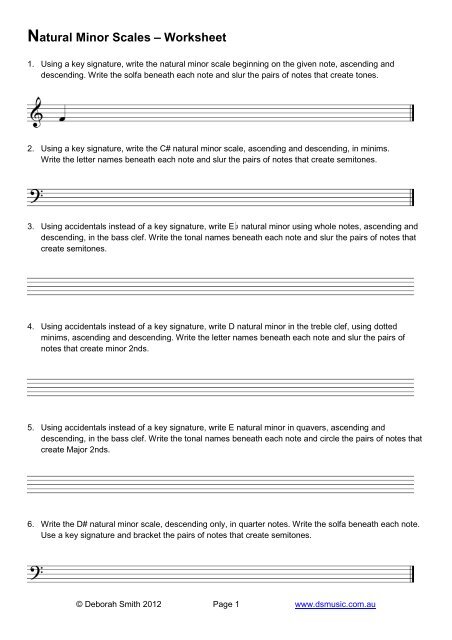


Natural Minor Scales Worksheet Deborah Smith Music
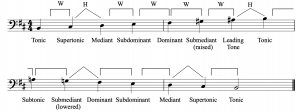


Minor Scales Scale Degrees And Key Signatures Open Music Theory
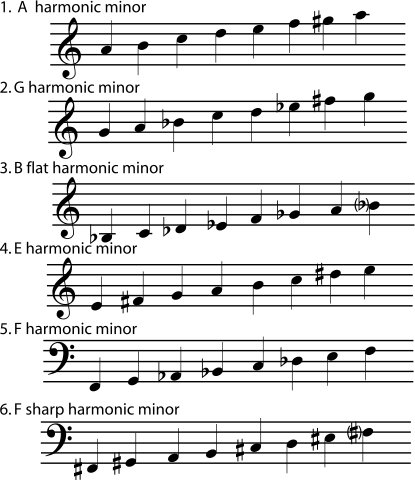


4 4 Minor Keys And Scales
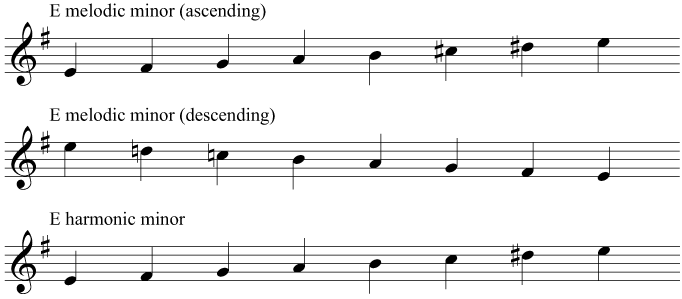


Study The Minor Scale
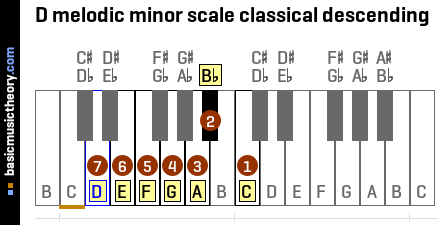


Basicmusictheory Com D Melodic Minor Scale


Ap Chapter 5 Minor Keys And The Diatonic Modes Amanwarrenmusic Com



Basicmusictheory Com E Sharp Melodic Minor Scale


Scales Modes And Symmetry



Theory Blog Melodic Minor Scale
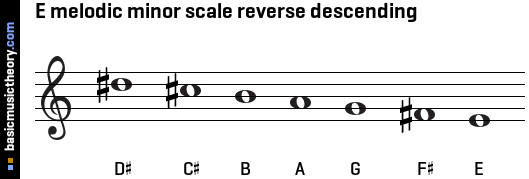


Basicmusictheory Com E Melodic Minor Scale



Basicmusictheory Com E Melodic Minor Scale


Http Static1 Squarespace Com Static 521bb4bee4b093a8696f53f1 T 561af3efe4b0ae8c3b9f865f Int1 3s E Natural Melodic And Harmonic Minor Pdf
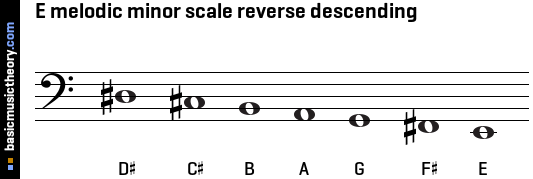


Basicmusictheory Com E Melodic Minor Scale



The Minor Scales Natural Harmonic And Melodic Hello Music Theory


The E Minor Scale Three Types How To Form



22 Harmonic Minor Bass Clef Flashcards Quizlet



Natural Minor Scales Bass Clef Page 1 Line 17qq Com
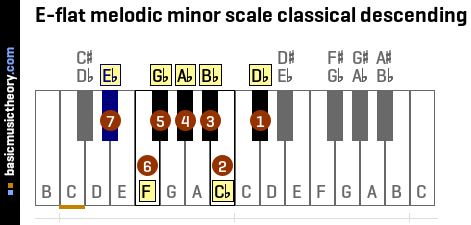


Basicmusictheory Com E Flat Melodic Minor Scale


Musictheorysite Files Wordpress Com 15 04 Scales 2 Pdf


Q Tbn And9gcreabx7znleko4okybepry62q4qompvp32tqx Rveprffhhxrdu Usqp Cau


Learn Stleonards Vic Edu Au Yr9music Files 14 07 Music Theory 101 Worksheet 2 Pdf


Minor Key Signatures



Basicmusictheory Com D Sharp Melodic Minor Scale



Abrsm Natural Minor
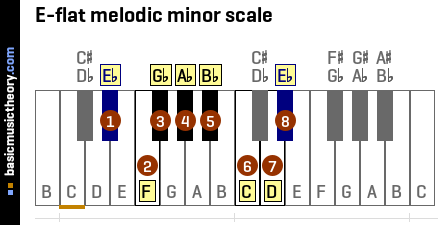


Basicmusictheory Com E Flat Melodic Minor Scale



Theory Blog Melodic Minor Scale


Q Tbn And9gcsne5pix4mzowkvugg92hs5azce9xxa8fq3yplahvitndebsjax Usqp Cau


The E Minor Scale Three Types How To Form



G Harmonic Minor Scale Bass Clef Page 1 Line 17qq Com
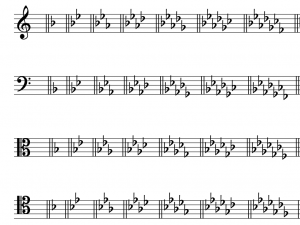


Minor Scales Scale Degrees And Key Signatures Open Music Theory
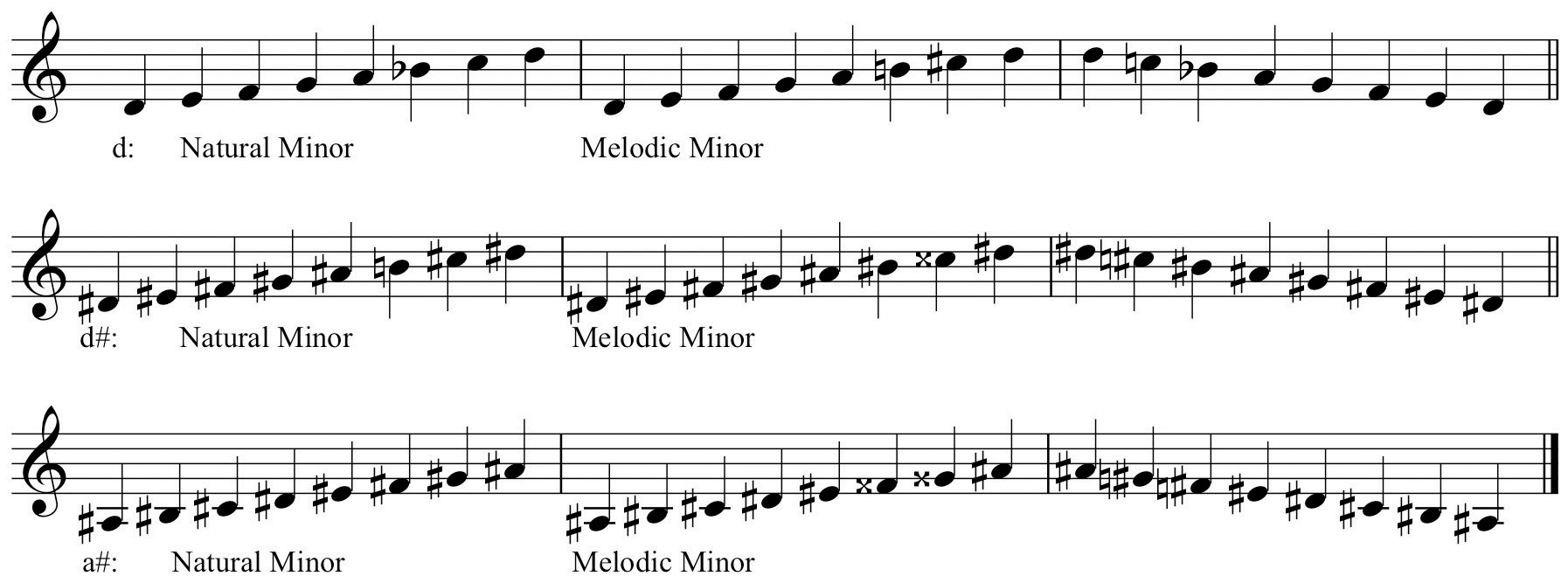


The Foundations Scale Steps And Scales
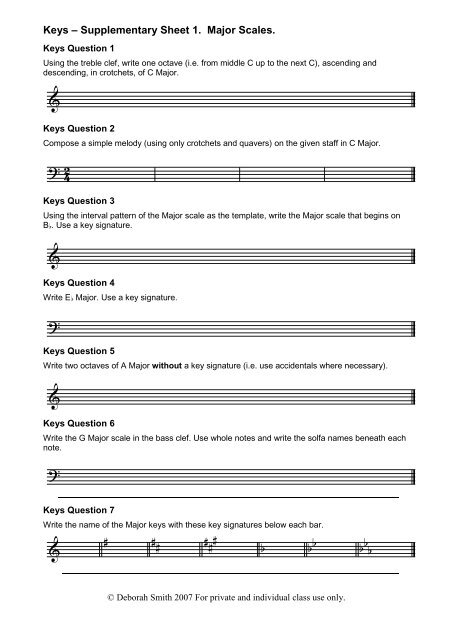


Keys Supplementary Sheet 1 Major Scales Deborah Smith Music
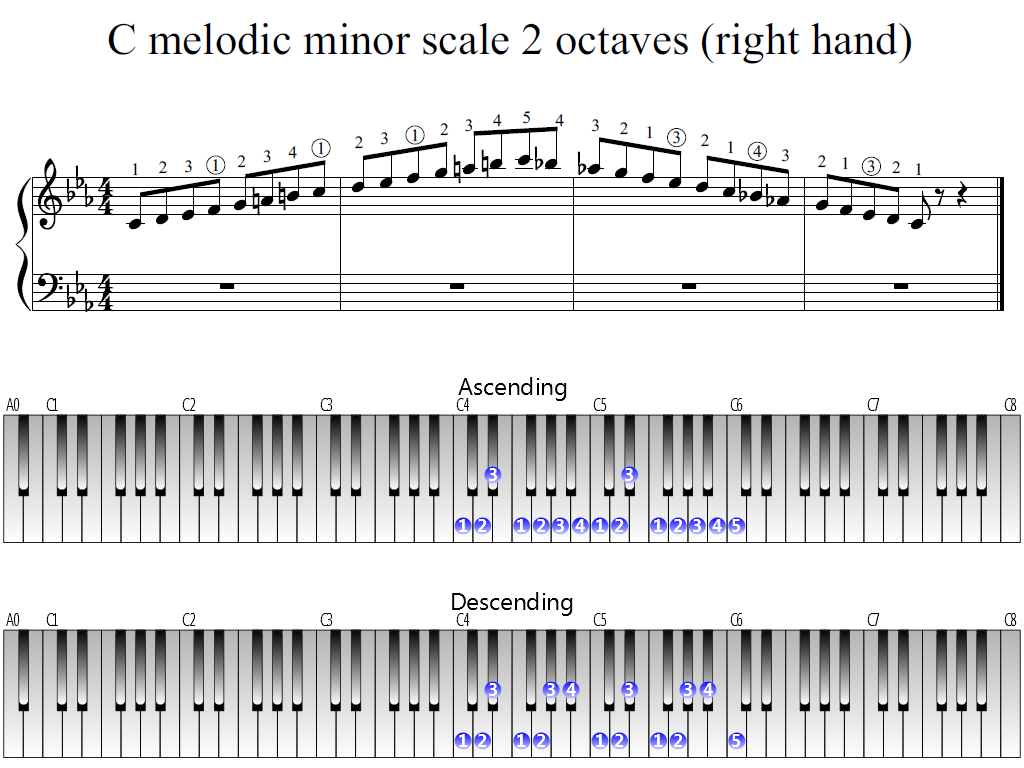


Higher And Advanced Higher Music Help The Melodic Minor Scale



Pin On Free Piano Exercises


Www Rspba Org Documents Learning Advanced Pdf


Q Tbn And9gctecd569iuarpbjhgfjq0oygbvwu39r6h2l4icp4suyinlbhraw Usqp Cau



An Introduction To Music Theory 5 9 Minor Scales The Melodic And Harmonic Forms Openlearn Open University 24 1



Minor Scales Sabetmusic



6 Scales



Theory Blog Melodic Minor Scale
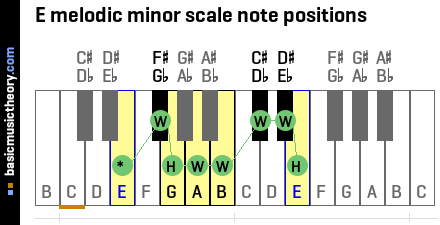


Basicmusictheory Com E Melodic Minor Scale


The E Flat Minor Scale Eb Minor Scales On Piano Treble And Bass Clef Natural Melodic Harmonic Minor Scale


Section 3 1 Digital Sound Music



The Jazz Sax Improvisation Blog Of Saxophonist Bobby Stern Bobbysternjazz Com



The B Flat Minor Scales



A Beginner S Guide To Keys In Music The Cello Companion



F Melodic Minor Scale 1 Octave Left Hand Piano Fingering Figures Dubai Khalifa



Basicmusictheory Com E Flat Melodic Minor Scale


Http Static1 Squarespace Com Static 521bb4bee4b093a8696f53f1 T 561af3efe4b0ae8c3b9f865f Int1 3s E Natural Melodic And Harmonic Minor Pdf


Http Dsmusic Com Au Wp Content Uploads 12 01 Vce Worksheets 1 To 5 Pdf


Q Tbn And9gcqda6 Jcm39y5luigiizpw Ehh1o7tgkvkojsjmipiumkuqwg D Usqp Cau



Basicmusictheory Com E Double Flat Melodic Minor Scale
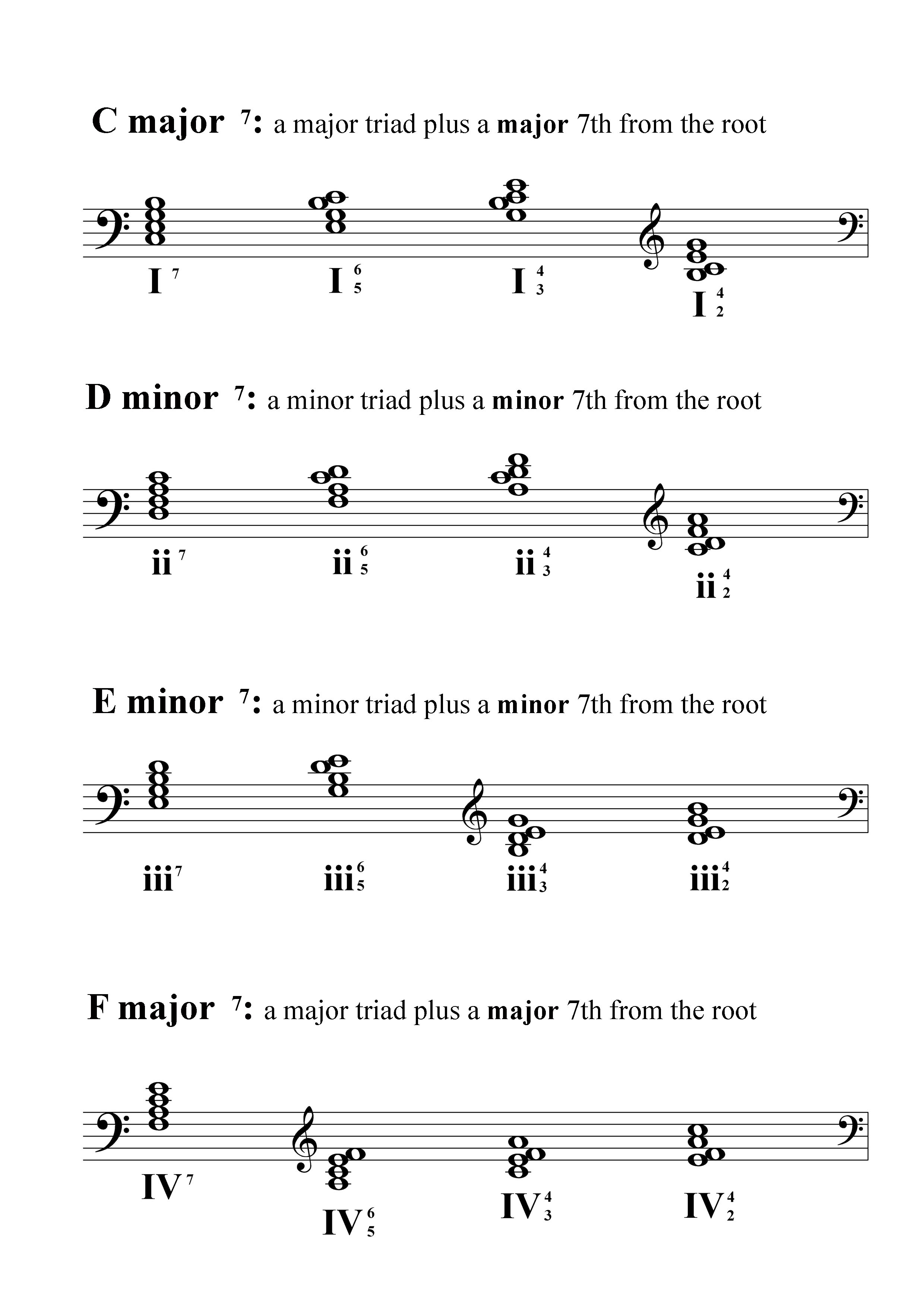


Music Scales The Cello Companion


Www Salvationarmycarolinas Org Assets Mediasources Musicandarts Assets Images Theory 6 Student Book Compressed Pdf



4 Minor Scales



Workbook Assignment 7 4 A Writing Minor Key Melod Chegg Com



Electric Bass Two Hal Leonard


D Minor Scale Natural Harmonic And Melodic
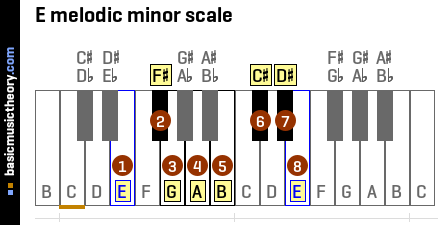


Basicmusictheory Com E Melodic Minor Scale



C Natural Minor Scale Bass Clef Page 1 Line 17qq Com
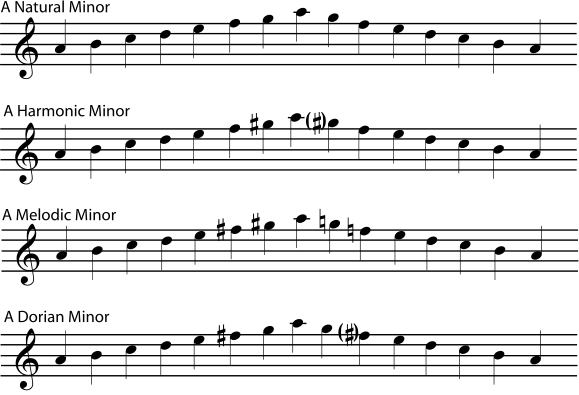


4 4 Minor Keys And Scales


Guitar Eku Edu Sites Guitar Eku Edu Files Files Eku music theory study guide 1 Pdf



Basicmusictheory Com A Flat Melodic Minor Scale


The E Minor Scale Three Types How To Form
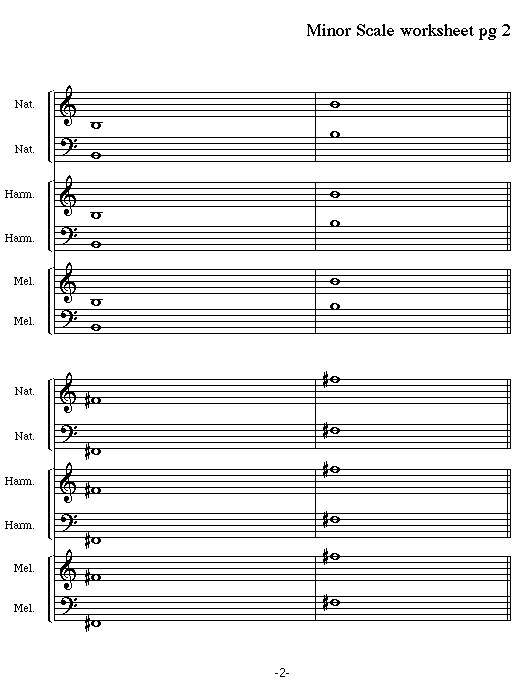


Minor Scales



Music Theory Why Are There 3 Minor Scales ron Searle



The Minor Scales Music Theory Academy



Eb Natural Minor Scale Bass Clef Page 1 Line 17qq Com


The E Flat Minor Scale Eb Minor Scales On Piano Treble And Bass Clef Natural Melodic Harmonic Minor Scale



The Minor Scales Natural Harmonic And Melodic Hello Music Theory


コメント
コメントを投稿